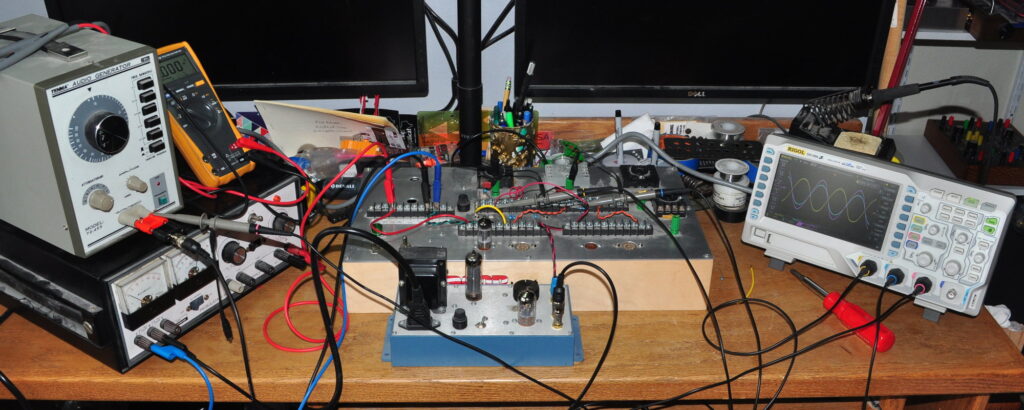Having performed the investigations I wanted on the gain stage on which I was working, I then moved on to another part of the project. And the chaos from a couple of days ago was nothing compared to yesterday.
In my post from the 7th, I said “It’s amazing how a single tube can be responsible for this much chaos on my work desk.” As it turns out, that was nothing. Here’s how my work desk looked yesterday afternoon.
Since I was not working with a generic triode gain stage I couldn’t use my triode test station. This time I had to prototype the entire circuit. I also needed to use a preamp on my signal generator to get the drive levels for which I was looking. Center rear is my prototyping station, center front is a 4S preamp. On the left is my IP-17 high voltage power supply, audio signal generator, and DMM.
On the right is my Rigol 1054Z oscilloscope. As it turns out, this was one of those times when a four channel scope really pays off. Not only could I visualize three waveforms simultaneously, but using the built in math functions I could get direct comparisons of waveforms to isolate circuit behavior. I don’t use these functions often, but when I really want them its nice to have them available. The Rigol DS1054Z is really an affordable option for someone wanting something with four channels, good functionality, and that’s not too expensive.
I managed to fill a complete page in my notebook with notes and data. I think most of the electrical design for this new project is almost done. I still need to play with the power supply, but this is another project with which I can move forward.
As always, questions and comments are welcome.


Not really “Chaos” but more like “Choreography.” Appreciate you pointing out the Rigol DS1054Z. Looking forward to seeing where the data lead.
This was buffer work for an upcoming preamp project. Buffers are one of those things where it’s good to get the design right. However, there are so many degrees of freedom that sometimes it’s easier to just try some things out than grind through twenty different design points. When you hone in on something you like, then you can go back to the detailed design and analysis.